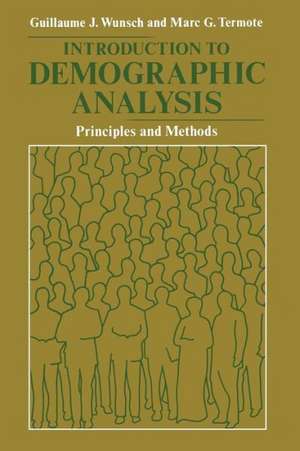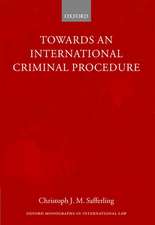Introduction to Demographic Analysis: Principles and Methods
Autor G. Wunschen Limba Engleză Paperback – 25 feb 2012
Preț: 387.96 lei
Nou
Puncte Express: 582
Preț estimativ în valută:
74.25€ • 76.92$ • 61.96£
74.25€ • 76.92$ • 61.96£
Carte tipărită la comandă
Livrare economică 21 martie-04 aprilie
Preluare comenzi: 021 569.72.76
Specificații
ISBN-13: 9781468423754
ISBN-10: 1468423754
Pagini: 292
Ilustrații: XIV, 274 p.
Dimensiuni: 155 x 235 x 15 mm
Greutate: 0.41 kg
Ediția:Softcover reprint of the original 1st ed. 1978
Editura: Springer Us
Colecția Springer
Locul publicării:New York, NY, United States
ISBN-10: 1468423754
Pagini: 292
Ilustrații: XIV, 274 p.
Dimensiuni: 155 x 235 x 15 mm
Greutate: 0.41 kg
Ediția:Softcover reprint of the original 1st ed. 1978
Editura: Springer Us
Colecția Springer
Locul publicării:New York, NY, United States
Public țintă
ResearchCuprins
1 Basic Principles of Cohort Analysis.- 1.1. Fundamental Concepts.- 1.2. Basic Principles in the Absence of Disturbances.- 1.3. Basic Principles in the Presence of Disturbances.- 1.4. References and Supplementary Bibliography.- 2 Basic Principles of Period Analysis.- 2.1. The Double Purpose of Period Analysis.- 2.2. The Standardization Approach and the Problem of Summary Indexes.- 2.3. The Translation Approach.- 2.4. Population Structures and Movement.- 2.5. Examples.- 2.6. References and Supplementary Bibliography.- 3 The Analysis of Mortality.- 3.1. Infant Mortality.- 3.2. Period Measures of Mortality.- 3.3. Some Comments on Cohort Measures of Mortality.- 3.4. References and Supplementary Bibliography.- 4 The Analysis of Nuptiality.- 4.1. Analysis Based on Statistics of Population Change.- 4.2. Analysis Based on Census-Type Data.- 4.3. The “Marriage Market” Problem.- 4.4. References and Supplementary Bibliography.- 5 The Analysis of Natality.- 5.1. Crude Measures of Natality.- 5.2. Age-Specific Fertility.- 5.3. Marriage-Duration-SpecificFertility.- 5.4. Birth-Interval-Specific Fertility.- 5.5. Measures of Natural Fertility and Contraceptive Effectiveness.- 5.6. References and Supplementary Bibliography.- 6 The Analysis of Migration.- 6.1. Time and Space in Migration Analysis.- 6.2. Spatial Demographic Accounting.- 6.3. Direct Estimation of Migration.- 6.4. Indirect Estimation of Migration.- 6.5. Intensity of Migration.- 6.6. Spatial Orientation of Migration.- 6.7. Efficiency of Migration.- 6.8. Examples.- 6.9. References and Supplementary Bibliography.- Append.- Table A.1. Set of Coefficients for Ledermann’s Model Life Tables (BothSexes).- Table A.2. Schedules of Divorce by Duration of Marriage 269.- Table A.3. Standard Set of Ratios of Probabilities of Survivalof Total Population (Ever-Married or Not) to Population Single at ExactAges.- Table A.4. Standard Marital Fertility Schedule of Hutterite Women (1921–1930).- Table A.5. Standard Schedule of Births by Duration of Marriage.- Table A.6. Standard Fertility Schedules by Birth Interval (for Low Fertility LF and High Fertility HF Populations).











